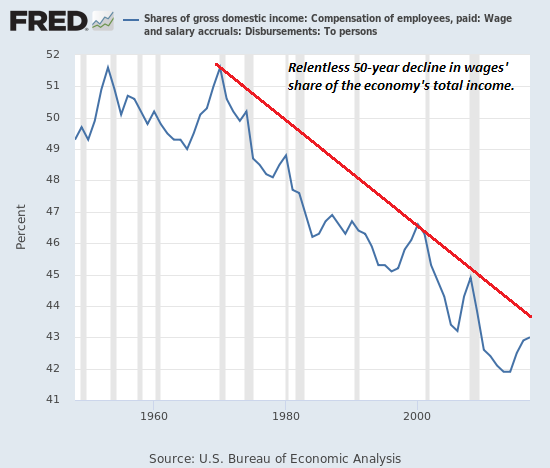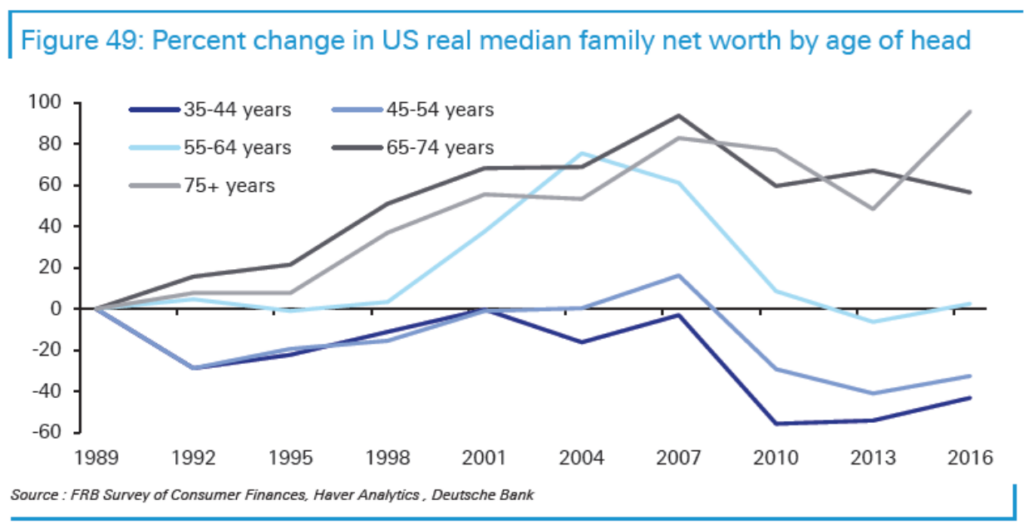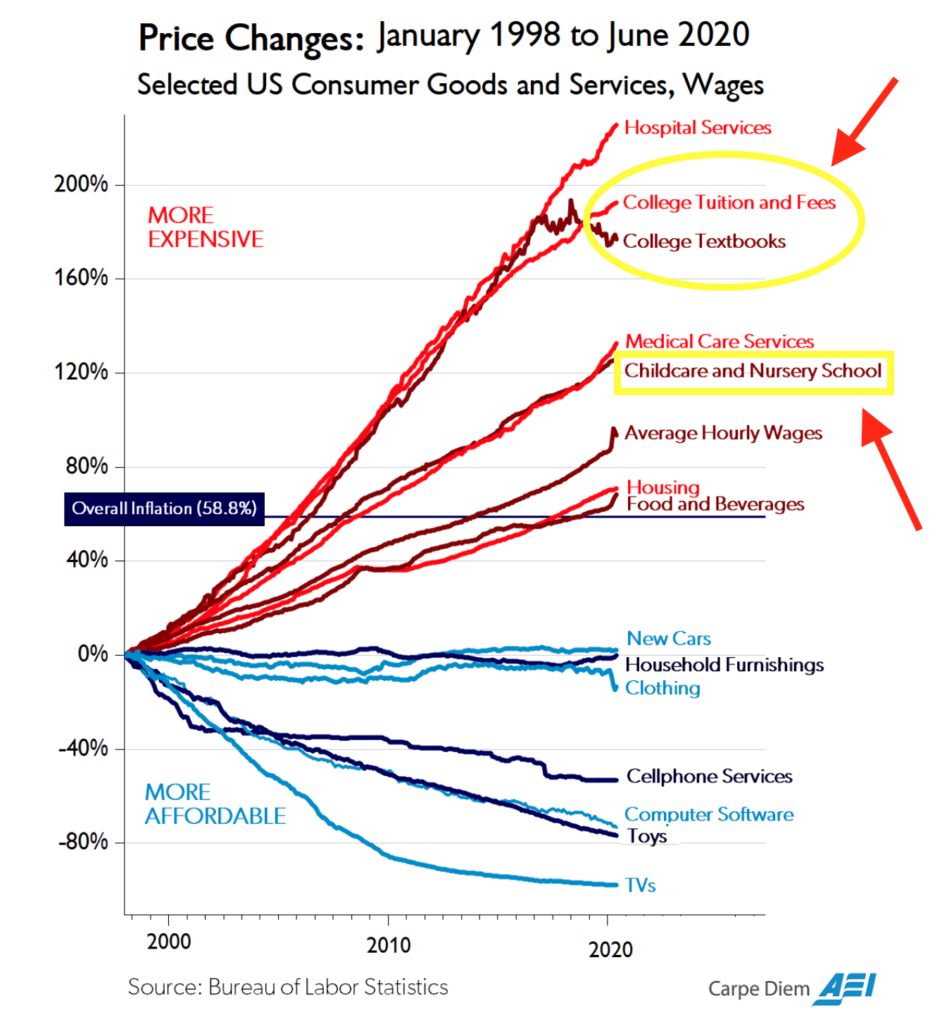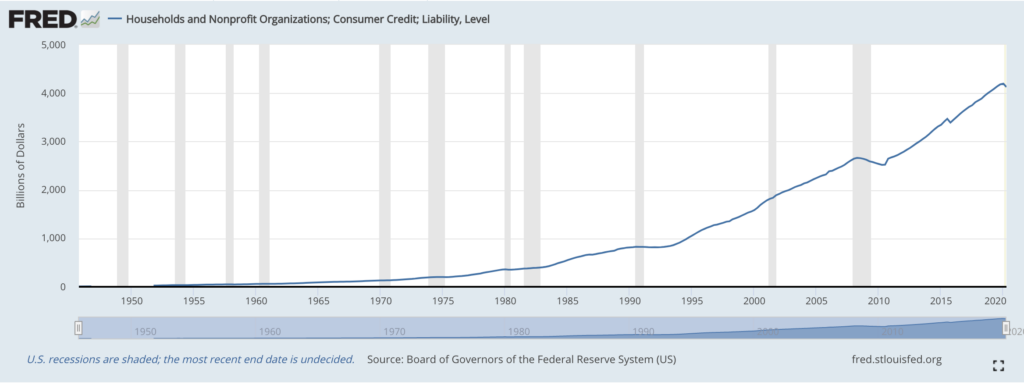The difficulties for those in the younger generations to generate wealth are consequences of a structural shift in the U.S. economy in the last forty years, well before today’s late Boomer and Gen X parents entered the labor market as twenty-somethings. As highlighted in a recent Federal Reserve Bank research paper, “Market Power, Inequality, and Financial Instability”, Isabel Cairo & Jae Sim:
A few secular trends have emerged in the U.S. economy over the last four decades…First, a real wage growth has stagnated behind productivity growth over the last four decades and, as a result, the labor income share has steadily declined…
“Market Power, Inequality, and Financial Instability”, Isabel Cairo & Jae Sim
To translate, wages for the majority of those in the labor market have not increased concomitantly with the growth in productivity (the ability to create goods and deliver services more efficiently) over the last forty years. Thus, while corporations have increased profits with productivity gains, the financial spoils of such gains have not been widely distributed amongst average employees.
…the before-tax profit share of U.S. corporations has shown a dramatic increase in the last few decades…
“Market Power, Inequality, and Financial Instability”, Isabel Cairo & Jae Sim
However, wages for the majority of employees are decreasing, and have been declining for decades:

which may explain the growth in wealth for the top 5% of all Americans.

Explaining why:
…income inequality has been exacerbated over the last four decades…
“Market Power, Inequality, and Financial Instability”, Isabel Cairo & Jae Sim
widening the gap between the economic haves and have nots:
Fourth, wealth inequality has also been exacerbated during the last four decades…
“Market Power, Inequality, and Financial Instability”, Isabel Cairo & Jae Sim
Net worth has declined since the Great Financial Crisis of 2008 for every generation 65 years and younger.

The wealth declines are explainable as workers earn less, and expenses, like college tuition and childcare are rising. So, families are spending more of their decreasing wages to nurture their children, saving or investing less:

As expenses are greater than income, yet more families are seeking to maintain their lifestyle as well as provide their children the greatest chance for economic prosperity, then
…the rising household sector leverage has been coupled with rising financial instability
“Market Power, Inequality, and Financial Instability”, Isabel Cairo & Jae Sim

In the growing wealth gap between the haves and have nots, also demarcated along generational lines, the young are increasingly willing to air their frustrations publicly, no matter their politic. Their angst, translated into political mantra, may confuse the electorate, and obfuscate what is instead a generational conflict, that if unresolved could further decay our social fabric and result in dramatic change in the status quo.
For more information about how to both plan for and navigate the complex college admissions process in order to minimize the risk of educational malinvestment, check out Creative Marbles Consultancy



